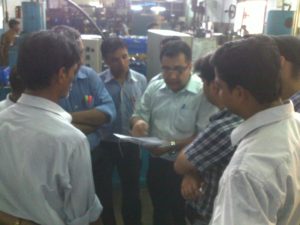 A Lean or Kaizen Event, also referred to as a Kaizen Workshop, Kaizen Blitz, Breakthrough Kaizen, or Rapid Improvement Event, is a powerful tool for accelerating improvement. It’s a structured team activity designed to remove waste and implement improvements in a defined work area or process, all within a few days. Kaizen Events are tactical, focusing on how to execute the strategy, utilizing the people closest to the work.
A Lean or Kaizen Event, also referred to as a Kaizen Workshop, Kaizen Blitz, Breakthrough Kaizen, or Rapid Improvement Event, is a powerful tool for accelerating improvement. It’s a structured team activity designed to remove waste and implement improvements in a defined work area or process, all within a few days. Kaizen Events are tactical, focusing on how to execute the strategy, utilizing the people closest to the work.
Kaizen Events solve problems quickly and succeed in consistently delivering sustainable results. The approach relies on cross-functional teamwork, implementing improvements in real time, and learning by doing. A familiar Chinese proverb sums up the kaizen philosophy: Tell me and I’ll forget, show me and I may remember, involve me and I’ll understand. The Kaizen Event is characterized by a number of attributes that, when followed, enable teams to consistently outperform established expectations, and make this improvement approach fundamentally different from traditional models. Following are 6 key characteristics of running successful Kaizen events or Kaizen Workshops.
- Value stream driven: Linking your Kaizen Events to a future state value stream map and implementation plan enables a holistic view of customer value and minimizes the risk of sub-optimization
- Total Employee Involvement: the primary members on Kaizen Teams are the people who are working the process daily. In most settings, the people doing the work know what needs to change, but traditional improvement processes have not provided them with the proper platform to participate in actualizing their ideas. Encouraging teams to seek the wisdom of ten rather than the knowledge of one promotes inclusive decision making and, as a result, more innovative and sustainable solutions. An important aspect of the kaizen philosophy is to use measurable objectives and a learn-do model to develop teamwork and build an improvement skillset in your front-line workers, which further increases organizational flexibility and responsiveness to changing demands.
- Cross Functional Teamwork: Kaizen Events leverage the power of involving upstream suppliers, downstream customers, and subject matter experts, as well as objective “outside eyes” in problem solving. Leveraging the perspectives and experience of a cross-functional team has many benefits. First, it dissolves interpersonal and interdepartmental tension that may exist prior to a Kaizen Event, in large part because individuals and departments don’t understand one another’s needs and don’t regularly solve problems together. Working on a defined problem provides everyone with a full understanding of how the process works and what the true needs are. From here, the team generates the best solutions, strengthening working relationships in the process
-
Short duration: Kaizen Events usually last for two to five days. While this may seem like a long time to sequester people from their normal duties, it’s actually a short time period when compared with the length of time the defined process problems have typically existed and will likely continue to exist without the Kaizen Event. Also, the amount of work that’s accomplished and the learning that occurs in only two to five days far exceeds that which is experienced in most traditional improvement activities and training programs
-
Waste elimination: Kaizen Events place greater emphasis on eliminating non-value adding activities than improving speed in performing value-adding (VA) activities. You want to eliminate the eight wastes embedded in the work sequence that are causing the greatest pain and that will produce the most immediate results. This does not mean that implementing improvements to accelerate VA activities is off limits—it just means that optimizing value-added work is not the primary focus for Kaizen Events
-
Built-in sustainability: Change is difficult, and to achieve sustainability, we must confront our human tendency of returning to the way we’ve always done things. Kaizen Events address this issue in several ways: 1) thorough current state analysis and clear improvement objectives; 2) total employee involvement; 3) real-time leadership and peer buy-in regarding changes; and 4) the development and execution of a solid Sustainability Plan


